
You’ve probably heard the phrase “sitting is the new smoking” (perhaps even from this blog), to describe the negative health effects of spending over 9 hours a day sitting – the current average daily sitting time in this country. A typical American spends more time sitting in a chair than they do sleeping at night! Too much static sitting has massive and varied consequences that range from higher cancer incidence to obesity. There’s an entire industry of ergonomic furniture designed to help us sit better (and some of us have remodeled our desks for standing use only), but there’s still a potential problem when you get up from your chair: you’ve turned into a quad walker! (Cue dramatic music…)

While it might sound like some kind of sci-fi vampire robot, quad walking is simply a term that refers to lack of extension at the hip joint during gait (and let me qualify, before I launch into this discussion, that gait is an extremely complicated whole body event, with a ton of other loads/ forces/biomechanics at work which I am omitting for the sake of simplicity, and also to avoid brain breakage). When you walk, part of the leg motion involves extending your hip so that one leg moves behind you as the opposite leg swings forward. If you’ve spent a lot of time sitting in a chair, odds are you’ve adaptively shortened the muscle and connective tissue at the front of your hip, so that when you go to stand and walk, the hip no longer wants to go into extension, and you end up quad walking (which looks like flicking your leg forward from the knee as the quadriceps muscles dominate the action – it’s like you’re still sitting in the chair as you walk). If your main physical activity when not in a chair involves a lot of repetitive hip flexion (like cycling, or rowing, though I’m not trying to malign either activity, they were just the first two that came to mind, there’s more examples, but I’m hungry), then this pattern is being reinforced.
Warning: full nerd paragraph ahead!
Whenever we deviate a movement pattern from the ideal, it’s expensive to our bodies. This deviation is no exception: if I can’t create good hip extension in standing and walking, the hip is unable to optimally dissipate load throughout the joint. In other words, I create uneven wear and tear to the cartilage, ligaments, and joint capsule, not to mention muscle weaknesses front, back and sides (just because the front of my hip is short, doesn’t mean it’s necessarily strong). At the moment during gait called mid-stance, right before my hip extends behind me, the force in my hip increases to 300% of my body weight. The cartilage inside the joint is thickest at this positioning of acetabulum-on-femur so that my hip can handle the force – but if I’m quad walking, I don’t get this optimal overlap, and I wear down the joint.
What to do? Lots of things!
1) Change up your sitting. Sit different ways. Get up. Get down. Move it all around.
2) Strengthen your extensor muscles (more on this Friday).
3) Stretch the front of the hip (see above).
4) When walking, try this: leave your heel down behind you as long as you can before picking up the back leg. A client of mine dubbed this exercise “The Wedding March,” I believe because he felt a little awkward and artificial at first, but you’ll soon incorporate it into a smooth push off (unless your ankle dorsiflexion is compromised and limiting movement, which it might also be, but that will have to wait for another post).
Check back on Friday for a great YTU pose to stretch and strengthen the hip and get you out of “The Land Of The Quad Walkers”!



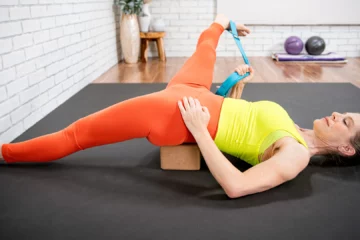
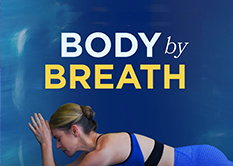
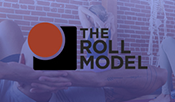
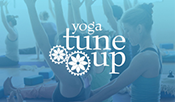


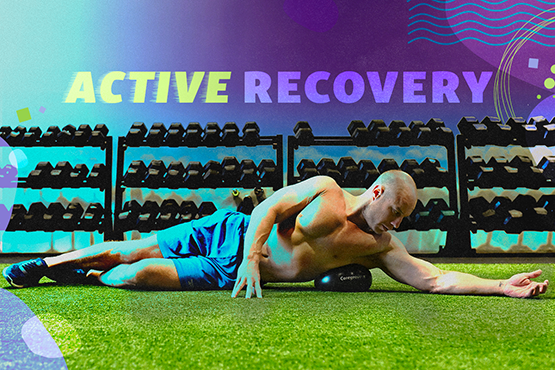
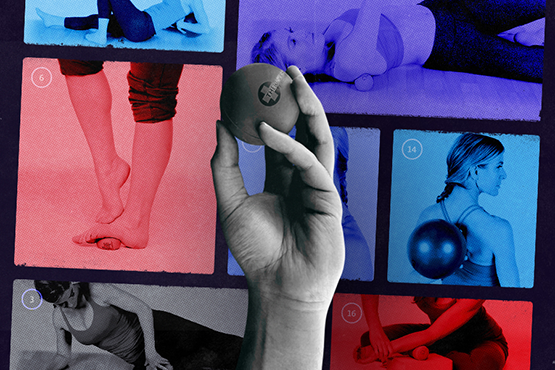
This has been such a revelation for me! Years of yoga has left me quad dominant and butt sleepy resulting in quad walking. I love these “little” big things I can do to help unwind the patterns that keep my quads so loud in so many movements. I especially like the “wedding walk” and it feels good on my plantar fascia as well.
Well now I am going to be that crazy, weird dog walker person who walks really slowly and holds her back leg on the ground longer for every step. |I have been trying to increase the length of my gait. This will definitely help.
These are simple tips that anyone can integrate when walking. I know I will be more mindful about how long my leg stays in extension before I allow it to step forward. As a meditation teacher I lead a walking mindfulness meditation class and plan to implement this tip as a party of the walk! Thank you.
It’s interesting that we could be doing all things “good” for our bodies, cardiovascular work, weight work, healthy eating habits,but by ignoring the way we do what we do the most…..we can miss the best excercises yet!
I’ve never heard of Quad Walkers before, and now I’m on the lookout! While I have not consciously witnessed quad walking before, I imagine that for quad walkers, the spine could also lean forward toward the quads in order to maintain hip flexion, if there is not enough thrust in the lower leg to propel it forward. Does this make sense?
Your tip #4 is extremely interesting! I am certainly myself a quad walker and had never realised how little I used my back leg to propel myself forward. Paying attention the way you explain immediately fires the back leg’s hip extensors and at the same time stretches the hip flexors with an incredible efficiency. Thanks, I’ll be mindful in the coming days and try my best to avoid the wedding march style…
Such a great post. I love watching how people walk and trying to figure out what’s working and how to get them to move in their particular way. I’ve also noticed this in myself and others when climbing stairs. When I’m tired I’m a quad climber.
It’s funny, so many people think you can unravel your bodies tendencies with 4-5 classes a week, but in reality, if we work at a desk, we can’t undo 30 hours of sitting poorly with 4 hours of yoga. I’m excited to try the heel down walking technique and look for other ways to incorporate your suggestions into daily routines to get a sense out where I’m out of balance here!
Until recently I thought that because I cycle to and from work sitting wasn’t so much an issue for me… but now I wonder if it is the explanation of my experience with cronical tired knees? I will do the walk!
Awesome post. I can’t wait to pay more attention to my gait as I walk today. Also, looking forward to sitting on a park bench and watching others walk (a favorite pastime of mine) to see if I can tell who might be sitting to much in their daily life!
Never heard the term Quad Walkers before, but I do see this a lot!!! I can’t believe the average time sitting is 9h!!! I didn’t think of strengthening the hip extensors oft a better walking pastern but it totally makes sense! I will remember that! Thanks Sarah.
I like the term. I have seen others walking like this before, was not sure of the name. But completely makes sense given their occupations and the amount of time they spend at a desk and in a car.
I will definitely be sharing this information with them.
Thanks
We referenced this blog post in Level 1 class today! Alex Ellis did a great example of it. I did NOT know that the space of time between legs extending created a 300% increase in body weight, it makes me so much more conscious of my walking and others. The heel down as long as possible behind you in extension is a great trick to try. So much more awareness of the Quads, hips and the way I sit and how long.
My husband is a quad walker and we have been working together to help him find more ROM in his hips. Since we started exploring his hips, he has found that he no longer feels as stiff but has yet to make any significant strides (ha! gait joke!) in lengthening his hip flexors sufficiently. He was starying to get fed up with my insistence of using therapy balls and “weird” poses and minivinis, but I had him read this post and he has decided that what I am suggesting must be legitimate 🙂 Gladly, he has understood the importance of these efforts and is willing to put in the time.
Thank you for explaining so well what quad walking is and how it affects our body. I will now pay more attention to my hip extension when I walk and work on strenghtening my hip extensors and stretching my hip flexors, since I spend many hours a day sitting at my desk…
Definitely guilty of this. Will be trying your recommendations out.
Thanks Sarah
I greatly appreciate this research, the relevant informations and stimulating solutions that you share, Sarah.
I found some answers to the observations of the modification of the walking, from child, modification starting in 1st years of school (chair-desk-chair-desk !) !!
Some habits of movements we can change for an happy transformation! Thanks for links and podcasts attached to the article !
I walk à lot, but i sit à lot too! I am starting awaking myself to have a better fonctional movement when walking. This make me realise that my hips flexors may not be at there best. I will go to the friday blog right away! Thanks
I am a quad walker. I’ve been trying to add “glide walking” from Ester Gokhale’s book ‘8 Steps to a Pain Free Back’ to my normal everyday patterns. There are some similarities to what call your wedding walk but with more glute contraction.
Quad walking is more common than we think! Thanks for outlining how this occurs, and how we can fix it! The biomechanics relative to acetabulum are spot on, and I like that you took this opportunity to go more into depth with gait cycle. This article makes sense to someone with no previous training in biomechanics, while still appealing to those who want a little bit more information. Very well rounded Sarah!
Thanks for such a clear explanation (with some bonus geekery thrown in). I am going to try “The Wedding March” while walking for the next little bit…I don’t think I’m a full-on quad walker, but my hip extension could definitely use some work. I notice I have the mental habit of wanting to get somewhere faster which I think causes me to limit hip extension while walking.
This actually made me stand up when I was reading it- we all sit too much! It helped remind me that informing my students frequently and specifically of the negative consequences is an important part of my job as a fitness professional- especially in my cycle classes! Thanks for presenting this in such a clear way, and with a bit of humor.
I see this a lot in my yoga students. Those who have approached me about lower back pain I have recommended these options to help the issue. Great article. Thanks!!
Once again, my experience with sciatica has made me more aware of possible triggers to that pain. In addition to releasing tightness in piriformis I feel I need to strengthen glute max. This article raises the possibility I may be a “quad walker.” This can be triggered by too much sitting and not getting full extension of the leg on back swing phase. Sarah suggests leaving the heel down a trifle longer than habitual—something like walking as if in a “wedding march.” This may be worth trying.
Love this article! Thank you. I have been wanting to study gait more and am re-inspired to do so.
I will also practice this in the pool with my Therapeutic Water Exercise class folks.
You had me at “Warning: full nerd paragraph ahead.” Thank you for breaking this down in an understandable, but still thorough way.
Definitely an awareness game changer to pass along to my sitting friends.
New term for me so I had to check out the article. Very interesting! I am fortunate to have an active job with minimal sitting but I know people who do walk this way. Time to pass them some therapy balls!
I knew that sitting was bad for me, but never considered that it affected my gait. I am going to practice “The Wedding March” and sitting different ways. Thanks for the great information.
Great article!!! Love the ‘Wedding March’, I think that will really help me with my quad walking and bring good awareness to firing up my back body!
Most people never pay attention to their gait, I am one of them. After reading Sarah’s blog I think I may be quad dominant. Like most people I sit way too much, I do try to get up and move around as much as I can. I have incorporated more movements into by standing breaks. I am fortunate to have a full flight of stairs in my home. Now, Every time I have to climb the stairs I place the whole sole of the front foot on the step and try to keep as much of the sole of the back foot of the back leg on the step. Trying to keep the hip in extension and paying attention to when the heel leaves the step. The stairs need to climbed slowly I am not looking to raise my heart rate. I can’t wait to go for a walk, and do the Sarah Court’s Wedding March. Yes I do realize I will get some very weird looks. I may stop and turn to look at the looker and might comment to myself ”that person needs to do the Wedding March”
Wow, merci pour ces explications.Je suis de eux qui reste assis longtemps et je vais maintenant apporter une attention particulière à m’es hanches. Très bon texte, je vais pouvoir expliquer le tout a m’es futurs étudiant.
I am a quad walker and have been aware of it for a long while. I have been getting regular body work, personal training and doing yoga to try to counter this and began crossfit as well. I haven’t made as much progress in alleviating it until I spent a week getting my L1 YTU certification last week. the upper fibers of my quads were so sensitive yet receptive to the therapy ball work and taking the time to really focus on this area of myself and it has worked. I am walking with more extension in my gait and am able to access hip extension when doing certain lifts at crossfit. I am very grateful and committed to this system for this new range. I know I need to strengthen my glutes and other abductors in order to keep countering my quad dominance. Thanks for the article!
Thank you for this very interesting article. The term quad walking is definitely new for me and insspires me to learn more about this subject. It is fascinating to see how people walk and have adapted their postures and gaits to accomodate certain imbalances. I find sitting for long periods of time extremely unsetlling and uncomfortable and have to get up regularly to alleviate the discomfort, especially in my lower back. I will also pay closer attention in the way I walk and will try out the “wedding march”. Thank You!
This is a fun and intriguing new concept for me, “quad walking”. I’d love to see a video of that so I know what I’m looking for. I’m obsessed with posture and movement analysis and am eager to learn more. Thank you for sharing and I look forward to reading the follow up!
I am working on adjusting the way I walk and your suggestion to keep my back leg’s foot/heel down for as long as I can is very helpful. If I practice this slowly I feel my body feeling more stable while walking and Ive also noticed the extension in my hip improving.
LOVED this. This article is asking me to be intelligent as I walk and identify my blind spots in order to reduce cartilage erosion. I would never think about that AT ALL. Just that my hip hurts or my quads are tired- that would be the extent to which I would understand what is happening when I walk. Thanks for the insight.
Really like the term ‘quad walker’ to describe the adaptation to lack of hip extension. I became interested in the biomechanics of walking after reading Move Your DNA by Katy Bowman last year. My favourite way to wile away hours in an airport on long layovers now is to look at the adaptations people have made to their gait in order to propel themselves through space. Will count the number of quad walkers I see this week on my travels back home.
We can definitely tell a lot by watching people walking. Thank you for the cue of wedding walking. I actually tried it the moment, I finished reading your blog and it did feel like it.
That’s it! Lack of extension in a kettlebell swing puts an amazing amount of stress on the lower back…and a common fix to the cue to extend is for students to simply do so at the lumbar spine because their hip flexors are too tight or just unused to working. The result is that they end up in a risky weird, unathletic position. A fantastic helper for this is the YTU Bridge Lifts. Strengthen your hip extensors while lengthening your hip flexors…a double dose of needed medicine!
I learned about this in Rolfing school. And yet, YTU seems to be much better at teaching me exactly what I learned in Rolfing school! How funny! It’s the idea of walking from your center of gravity, instead of leading with the leg to walk, or as you have said, quad walking. I also like how Kelly Starrett as said that your quads and fascia at your hip crease fold up just like your pants when you sit (or shorten) yet they don’t so easily smooth out as you stand after sitting like your pants do!
I have been a quad walker for years! Had no connection to my extensors, and had a massive heel strike and drag, amongst other postural and walking problems of course. It was Zyphoid process over pubic bone that started this whole awakening (another thing I’ve been taught so many times by rolfers and didn’t get until YTU). This work is amazing, and is pretty much why I haven’t finished Rofling school yet! Haha!
As someone who has tight quads as a result of injury this simple instruction which makes walking into a therapeutic action rather than a symptomatic one is gratefully received.
This is a good one. Thank you. Sitting is becoming new smoking. Since computers we sit even more. My hip flexors are super tight longer car rides or sitting in front of the screen. I just recently got a new watch with app that tracks my fitness goals. It reminds me to stand up and walk around. At first I thought it was silly, but I bet my back will thank me soon.
As an observer of the human body (especially) in airports after a long flight – I too have seen quad walkers! I particullarly loved the “nerd alert” paragraph. What an amazing insight as to how long sitting effects our walking. Do the school systems know about this?! I mean we learn to sit for longer and longer periods starting in kindergarten and we reward children for their ability to sit “nice” and still!
I’ve just read this post again Sarah – learn something different each time. Had just been talking about this very subject yesterday and how the simple yet complex movement of walking affects everything! I tend to have quite tight quadriceps which makes Virasana a joy! I am beginning to wonder whether I may be a quad walker – let the investigations begin! Thanks for the post!
This gives a lot of the why and how for context. It reminded me of the ministry of silly walks, a comedy skit by Monty Python and the Holy Grail. I’ll definitely be testing out the wedding march today
I will do the lunge pose as soon as I finish the homework.
I loved that nerd paragraph – it was ultra clear and informative. I had no idea how much force got transmitted at mid stance – thats crazy! Walking keeping the back heel down as long as possible – the wedding march (as close as I’lle ever get anyways) was really cool because not only did I become aware of better hip extension – I also became aware of better posture -thinking of my posterior heel kept by head more up and centre between front and back leg instead of barreling ahead with my head too far forward. Just an observation and so thanks for all.
I have never heard the term “Quad walkers” (but I like it!). It is a relative to “Dead butt syndrome”. It’s always important (yet challenging) to pinpoint the daily habits that contribute to misalignment and bodily wear and tear. As a personal trainer, I may spend 2 hours a week with a client, but the other 166 hours they are on their own. If I can help them figure out what may or may not be happening in those other 166 hours (like maybe being a “quad walker”), they are sure to make more progress!
Well I did not know the term but I have seen them, “The Quad Walkers”. I have been behind, on the side and in back of the quad walkers but did no realize this was attributed to sitting. I have a desk job but I have too much energy to sit for too long so I always thought of excuses to get up to move around even before hearing the new slogan “Sitting is the New Smoking”. I never knew though that this short gaited walk was attributed to long periods of sitting. I just assumed they had shorter legs or were too busy taking on their phone, or were not in a rush.
So interesting. Since I’ve started teaching yoga I’ve been fascinated by watching how people hold themselves when they walk–how the stride is affected by weak core muscles, excessive lumbar lordosis, etc. Never thought about quad walking but will definitely start watching and experimenting on the mat. Thanks so much for sharing!
I love the nerd paragraph! That’s so my language!! Thank you also for providing some direction on walking. Most of us do it daily and take for granted how complex of an activity it is. Moreover, we are unaware of how big of an effect slight deviations in alignment have on the whole body.
Solution #4 Wedding Marching!! I love it! I will definitely remember that one. Fascinating how the cartilage in our hips are designed to handle the wear and tear at the “acetabulum-on-femur” junction, and yet how a slight variance in how we move can cause so much damage.
When I was sitting a lot a lot a lot to study, I caught myself quad walking. I knew about it from taking your class. The changing up the sitting tip is very helpful and easy to use in daily life!
This is jam packed with valuable information. I will be paying much closer attention to the amount of time I spend sitting in a chair or in my car and noticing how it affects my walk.
HI Jared,
Both of those shoe scenarios will add to quad walking tendencies, since neither permits the heel to remain on the ground long enough for the hip to go into extension.
Missing hip extension seems to be one of the mechanisms for why people adopt walking like a duck as well, which we know becomes even more physiologically expensive, especially in how one’s internal rotation of their hip becomes dormant. Does an elevated heel or flip-flop exacerbate one’s quad walking tendencies? Once again, it seems that if we can quiet the noise of the monkey brain when going for a stroll and rather be more present when walking, we can integrate a more wholesome state from top to bottom in a very habitual, preventative way.
Hi,
I’ve heard alot of things about “sitting is the new smoking” but it’s the first time I hear the term “quad walking” (I speak French and I don’t know if there’s a translation for that…I should coin one!) I’ve taken a few anatomy classes and I’m now trying to leard a lot more about hips and knees, so your article is shedding light on what I was trying to figure out by myself. Thanks! I now understand well one of the things that is happening when we spend too much time sitting and feel that I can explain it better.
Thanks, Sarah for an informative article. The picture of quad walking really helped to understand your discussion. I hope that you consider for the sake of comparision, posting a picture of hip extension when walking so that we can really see the difference.
Also thanks for the YTU exercise that helps with quad walking.
Hi Taryn,
There are definitely exercises for people who have to stand for long periods – check out all the Hip, Lower back and Foot and Ankle Quick Fix videos, and get some Therapy balls for rolling!
Are there sitting exercises for those that do the exact opposite? You know, people who work on their feet for 9 hours? I know that this too can cause problems.
Hi Betsy,
Yes, the combined effect of sitting with hips and knees flexed creates short and weak front and back of the leg. The agonist/antagonist relationship happens when the body needs to hold itself up against gravity in some way. The chair takes all of the effort out of it, so both can go to sleep and get weak and short.
Sarah, thank you for this article. As a yoga teacher, I am always looking for clues to help me assess the needs of my students. I have never paid much attention to their gait and am excited to observe my students as they stroll in to my next class. I also appreciate that you mention that short quads are not necessarily strong quads. I have wondered if this could be the case, but no one ever laid it out for me in black white like that. Another question I’ve pondered with regard to the effects of too much sitting is how both the hamstrings (hip extensors) and quads (hips flexors) could both become tighter and shorter at the same time. At face value, it seems that if one is shortening the other must be lengthening (antagonists), but could it be that the hip flexion shortens the quads while knee flexion shortens the hamstrings?
Very in depth. Had to re-read and practice walking a few times. Trying to get the hang of it.
My husband is having hip pain at the moment. This is a nice concise explanation for him. I’ve been trying to convince him to stretch more. I think being flat footed and being a bit portly causes internal rotation and lumbar extension which adds to the hip flexion/shortening issue.
Aside from yoga, walking is my daily exercise, and I appreciate this heads up about the shortened front ligament resulting from sitting. Even when I was working (two weeks ago!) I moved around a lot–walked to speak to people rather than emailing or calling them–but now that I’m retired I certainly can do a better job of moving! I already seem to have a wider (longer) gait than most people with whom I might walk, and wonder if that is an indication that the quad walk might not be a major problem for me–but it’s hard to diagnose one’s own body mechanics.
In our training this week we have talked quite a bit about the issue of sitting and what it’s doing to us. Thank you for highlighting another way the body is adapting to our lack of movement. I need to go sit and do some serious people watching to see how many ‘quad walkers’ pass by.
This article is insightful. It describes the origin of a problem, how to detect it, the effects it has on the body and some steps that can be taken to remediate harmful effects. Don’t be bashful about nerding out, that’s the best part! I also like the description of “wedding march” as it gives a great visual for someone trying to learn the technique. This article has made me more aware of things that I need to look out for on my own body, and I will definitely try the “wedding march.” Thanks!
I CANNOT believe that the average time for sitting is 9 hours a day (which means a lot of people sit for even longer!), and I feel really lucky that my job does not have me doing that. But I have seen a lot of posting about quad walking recently and wanted to really understand what it was and how to fix it. I appreciate this post because it provided both easily in one place! Definitely going to pay way more attention to the way I walk and try “The Wedding March” to see how it changes things up. Thanks!
I am still confused about the 300% force part. But the exercise is effective to feel the difference between quad walking and also using the extensors. Although I do not THINK I am a quad walker; I do spend more time than I would like sitting. I think quad walking is faster (ooooh maybe I am a quad walker, or maybe its just thinking so hard about the extension part of walking). Perhaps many are quad walkers because they are in a hurry…
Thanks for this post, you really broke it down in very simple language which will be easy to explain to others. I feel as though my walking has improved already from incorporating this stretch into my daily routine!
Hey Christina,
Walking is a complicated thing and I’m a bit loathe to reduce it to an either/or – however, it is more accurate to think about pushing the world away from you like a circus performer on a huge ball. Hope that helps!
Thanks, Sarah, for the post. I now feel like I’m walking around like Frankenstein! haha! So, in walking, is it the back foot then that is propelling or pushing us forward and not the front foot pulling us forward so to speak? Would that be an acceptable way to think of it?
Thank you !!! I am a partial quad walker with right foot out..same side has knee issues…so many things tied together..so damn interesting..yoga tune up got me connected to this behavior…going to try walking the way you mention and see where it takes me…
Ayla – anything you can do to stretch out your calves will be helpful and yes, the technique of leaving your heel down behind you should help too. Is there any way you can work in flat shoes? You should also check out all the therapy ball work for the feet, lower legs and hips to help your tissues work better.
Haha! The wedding march provided me with such a phenomenal visual. I will be sure to include it in my students, as well as my own, desk jockey breaks to the water cooler.
Would the wedding march walking technique also be beneficial for people like me who work in heels and have shortened calves? Im a waitress so spend all my time walking instead of sitting however all that walking is done in heels, about 8 hours a day. This results in tenderness and discomfort when i change to flats and do a lot of walking.
I know! I know! I’m working on it… Wait – was this not written just for me? Well, the universe is clearly trying to get me to focus more on my gait. Thanks for the post. Super clear and helpful. Now I just need a QW support group.
Love love love this post! Want more of this! Got so many quad walkers in class will definietly use de wedding march in my next one! Hope i can pick up your brain if i see you in the summit! If you have more referance to this please ( anatomy nerd stuff) please share! Thank you!
I’m sitting at Peet’s Coffee, looking out at the passers-by on the street: Invasion of the Quad-walkers! Holy-moly. They’re everywhere.
so interesting! I have been trying to be careful how I walk, will try to incorporate that little cue daily. Can’t wait till the next post!
Love your writing style Sarah. Chairs…they are everywhere! Good reminder to move about much more. Thank you.
Sitting for too long really becomes American number chronic disease: lower back pain. Especially we learned to sit still at school growing up. it become a habit to sit in one position for a long time. the new thing we need to do is to move like seaweed whenever we are sitting. the muscles are designed to move not stay in one position for a long time. we can erase the back pain by having this new habit.
Thanks, Sarah, for this intriguing article. I just took an anatomy & physiology class & am fascinated by how our muscles work. I am looking forward to Friday’s blog on stretching & strengthening. Applying this knowledge in classes is always great for my clients as they start to understand how movements are connected to their well being.. or in this case, the inactivity of sitting in a chair can lead to unnecessary joint wear.